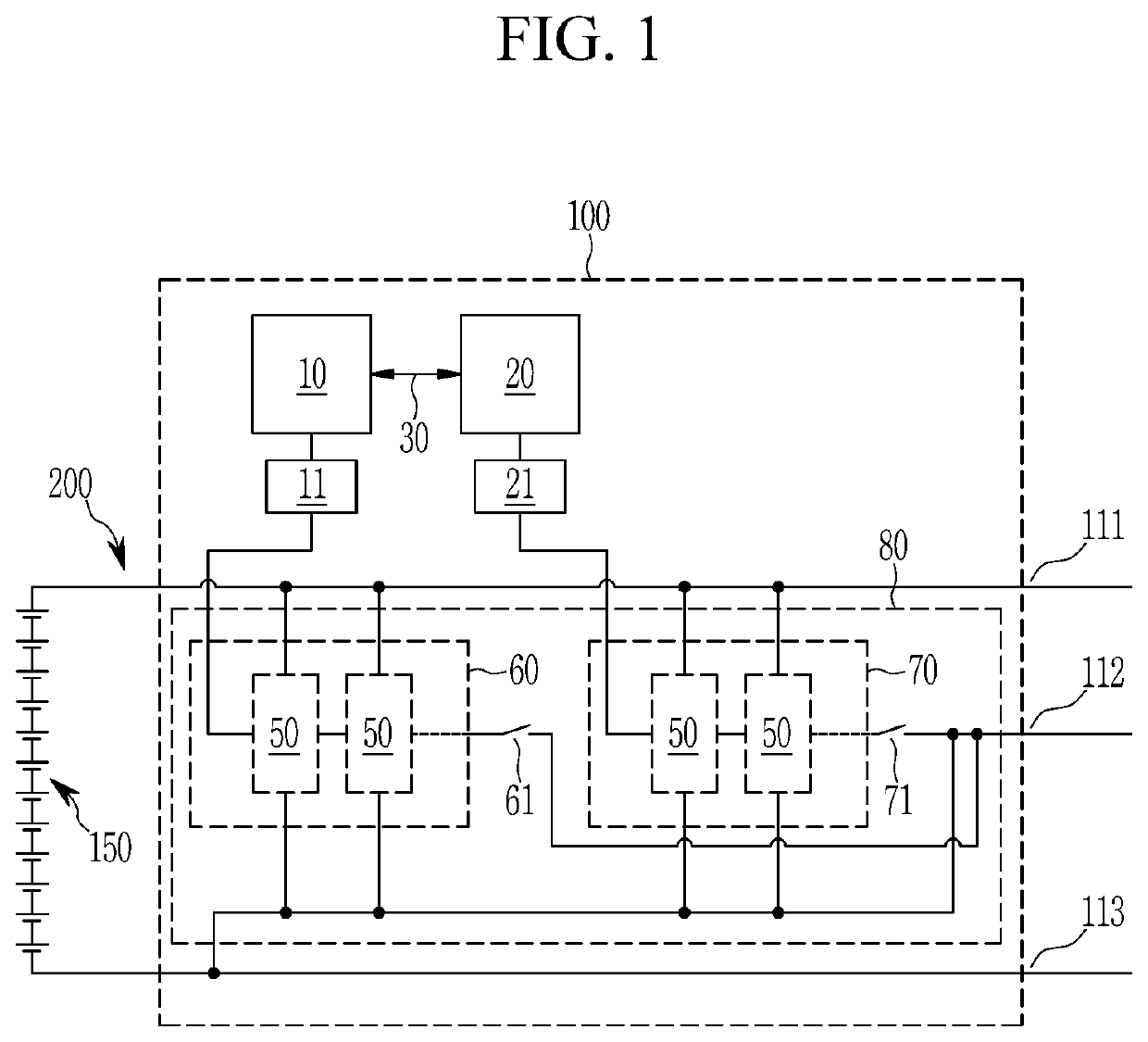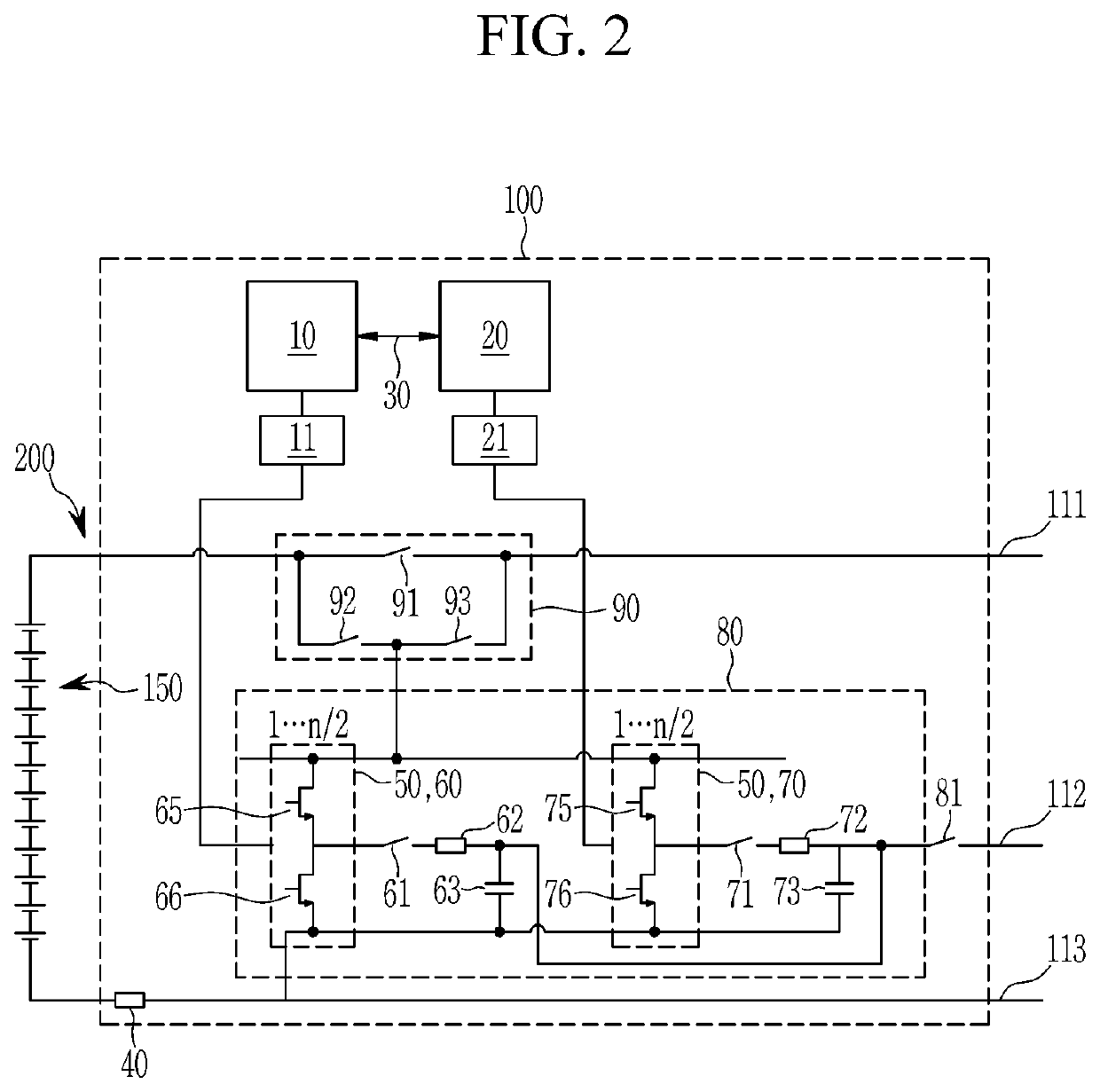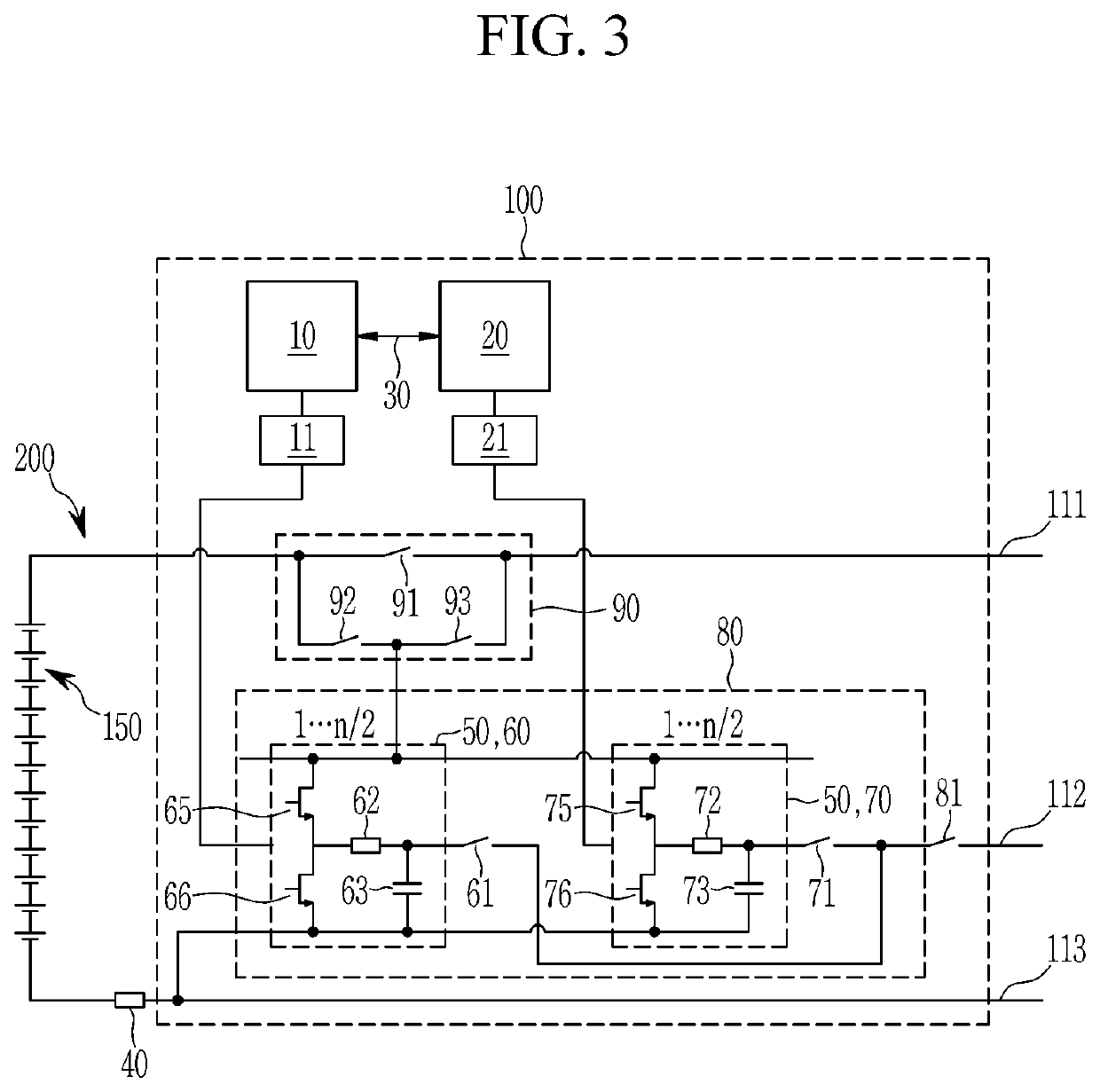Control system for a battery system
a control system and battery technology, applied in the field of control system for battery system, can solve the problems of gate driver stage level, and related art system does not consider the functional safety and availability of dc-dc converters, etc., to achieve the effect of satisfactory asil b requirements and contributing to the functional availability of the battery system
- Summary
- Abstract
- Description
- Claims
- Application Information
AI Technical Summary
Benefits of technology
Problems solved by technology
Method used
Image
Examples
first embodiment
[0053]FIG. 1 is a schematic drawing of a battery system 200, for example, of an electric vehicle, with a control system 100 according to the present invention. The battery system 200 includes a battery cell stack 150 including a plurality of battery cells interconnected in series and / or in parallel between a first stack node and a second stack node. The first stack node is connected to a first output node 111 of the battery system 200, and the second stack node is connected to a ground node 113 of the battery system 200.
[0054]An N-phase DC-DC converter 80 is interconnected between the battery cell stack 150 and the nodes 111, 113 and includes a plurality of (e.g., N, wherein N is a whole number greater than one) single phase DC-DC converters 50. Each of the single phase DC-DC converters 50 has a first input node connected to the first stack node and a second input node connected to the second stack node. Each of the single phase DC-DC converters 50 also has an output node that is co...
second embodiment
[0058]FIG. 2 is a schematic drawing of a battery system 200 with a control system 100 according to a Insofar the battery system 200 is similar to the battery system 200 shown in FIG. 1, the same elements are denoted by same reference numbers and a repeated description thereof may be omitted.
[0059]In the control system 100 shown in FIG. 2, only one single phase DC-DC converter is shown for each of the first fraction 60 and second fraction 70 from among the DC-DC converters for ease of illustration. Each of the single phase DC-DC converters 50 includes a pair of MOSFET switches 65, 66 / 75, 76 and is thus provided as a push-pull-converter. The first fraction 60 of DC-DC converters 50 is connected to the second output node 112 of the control system 100 via a shared first output switch 61, first output inductance (e.g., a first output inductor) 62, and first output capacitance (e.g., a first output capacitor) 63. The second fraction 70 of DC-DC converters 50 is connected to the second ou...
third embodiment
[0060]FIG. 3 is a schematic drawing of a battery system 200 with a control system 100 according to a Insofar as the battery system 200 shown in FIG. 3 is similar to the battery systems 200 shown in FIGS. 1 and 2, the same elements are denoted by same reference numbers and a repeated description thereof may be omitted.
[0061]In the control system 100 shown in FIG. 3, each of the single phase DC-DC converters 50 of the first fraction 60 includes an inductance (e.g., an inductor) 62 and a capacitor (e.g., a capacitance) 63, and each of the single phase DC-DC converters 50 of the second fraction 70 includes an inductance 72 and a capacitor 73. Each of these single phase DC-DC converters 50 further includes the pair of MOSFET switches 65, 66 / 75, 76 and is thus provided as a buck-type push-pull-converter.
[0062]FIGS. 4A-C illustrate a switching unit (e.g., a switch) 90 of the battery system 200 according to the second and / or the third embodiment as illustrated in FIGS. 2 and 3, respectivel...
PUM
 Login to View More
Login to View More Abstract
Description
Claims
Application Information
 Login to View More
Login to View More - R&D
- Intellectual Property
- Life Sciences
- Materials
- Tech Scout
- Unparalleled Data Quality
- Higher Quality Content
- 60% Fewer Hallucinations
Browse by: Latest US Patents, China's latest patents, Technical Efficacy Thesaurus, Application Domain, Technology Topic, Popular Technical Reports.
© 2025 PatSnap. All rights reserved.Legal|Privacy policy|Modern Slavery Act Transparency Statement|Sitemap|About US| Contact US: help@patsnap.com



